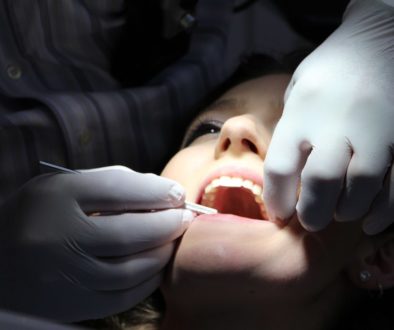Cracked Tooth Syndrome
 So you’re happily eating dinner when all of a sudden you bite down and feel a sharp pain in your tooth. You think surely it’s broken but when you look at it in the mirror, it all seems to be there. Over the next several days the tooth randomly hurts, is sensitive, and you can’t bite into anything hard with it. What is going on?
So you’re happily eating dinner when all of a sudden you bite down and feel a sharp pain in your tooth. You think surely it’s broken but when you look at it in the mirror, it all seems to be there. Over the next several days the tooth randomly hurts, is sensitive, and you can’t bite into anything hard with it. What is going on?
Let’s imagine your tooth as a road (trust me, this will make sense in a moment). When a road is first paved, the surface is smooth and strong. Over time, the surface gets damaged from normal wear and tear. Potholes form which are patched over with asphalt. This holds up for a while but eventually the surface all around the pothole begins to crack and wear away until eventually something comes along, hits it just right, and bam… you’ve got a big crack, the surface starts moving slightly, and a pothole patch isn’t going to cut it anymore. The only option at that point is to repave.
Same thing with a tooth. Teeth take a lot of abuse. They often get cavities which have to be patched (fillings). These “patches” weaken the tooth until one day something hits it just right and bam, just like the road, you get a big crack. Sometimes the tooth will actually break but other times these cracks are invisible to the naked eye. These mostly invisible cracks lead to “cracked tooth syndrome”. The tooth moves imperceptibly leading to all sorts of random symptoms such sensitivity, pain when biting, and dull aches.
Like that road, once the tooth is cracked a “patch” is no longer going to cut it. At least not for any significant amount of time. The tooth needs to be rebuilt. In dental terms, this means you need a crown. The crown acts somewhat like “new enamel” for the tooth and helps hold everything together again. When the crack extends more deeply into the tooth, you may need a root canal. In some cases the crack goes all the way through the tooth in which case it can’t be saved and needs to be extracted.
So how do you know if you have a cracked tooth? It can be challenging, even for dentists. The most classic symptom of a cracked tooth is that you get a severe, sharp pain as soon as you release your teeth after biting down. Some other things that can mimic a cracked tooth are a tooth with a bite that is too high, a tooth that is irritated from grinding or clenching, a filling that has come loose, or a large cavity. With a cracked tooth, you should see a dentist as soon as possible. This isn’t something that will go away or get better with time. Cracks only get larger. Wait too long and you’ll end up needing to have the tooth extracted. Get a crown on that tooth as soon as possible and you give yourself the best possible chance of saving the tooth long term.



